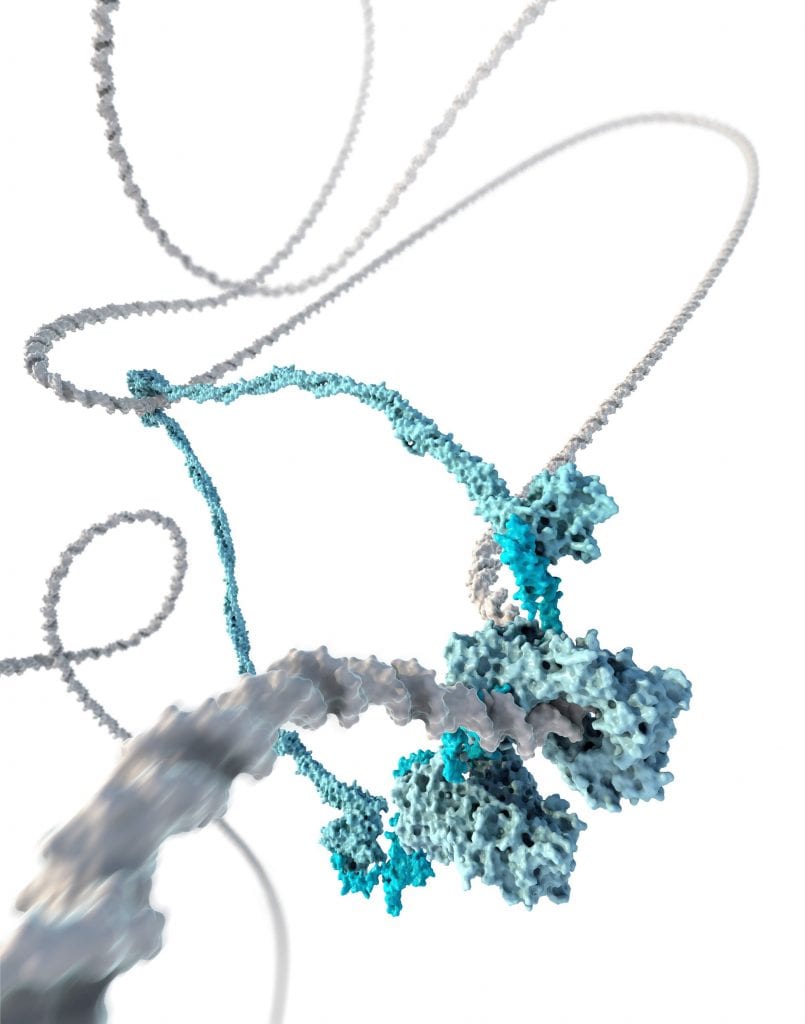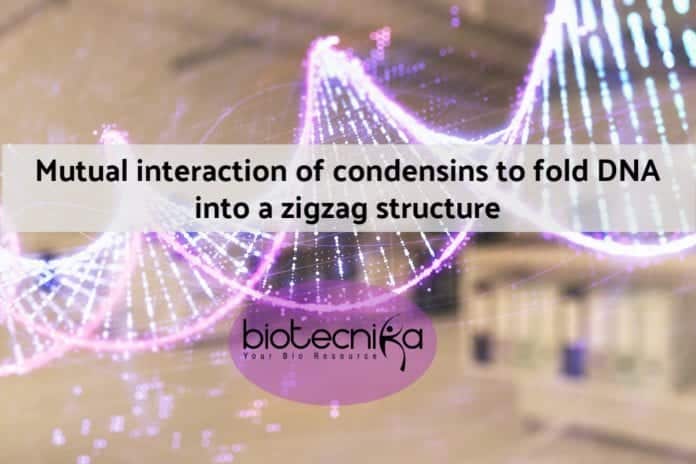Folding of DNA into a zigzag structure by mutual interaction of condensins
DNA inside a cell is just like tangled spaghetti strands on a plate. The cell organizes this tangle into tightly packed chromosomes to divide DNA between the two daughter cells during cell division. A protein complex known as condensin has been known to play a crucial function in this process, however, biologists had no idea on how this condensin protein functioned. In February 2018, researchers from the Kavli Institute at Delft University of Technology and EMBL Heidelberg found out that a condensin protein extrudes a loop in the DNA. Further studies by the sa
me research teams reveal that this is not the only method condensin packs up DNA. The researchers discovered the totally new loop structure, Z loop. Their findings on mutual interaction of condensins to fold DNA into a zigzag structure have been published in Nature for the first time.
More than just loops
Dr. Eugene Kim, TU Delft postdoctoral says “This research started with the question whether DNA can be folded into a compact chromosome by single loops, or whether there is even more to it,” “We wanted to see a number of condensins at the same time. The team uncovered an interesting new kind of folded DNA, which clearly varies from a single loop during the experiments, and surprisingly it occurs a lot more often than those loops. We experimentally figured out that DNA is folded in a zigzag structure. Since the DNA is folded in the form of the letter Z, we named these structures Z-loops.”
The researchers studied and researched the structure out of curiosity. “It had not been predicted at all,” claims Kim. “We wondered, how exactly is such a structure made out of 2 condensins, and what is the molecular mechanism underlying it?”
The zigzag structure of folded DNA through the collaboration of condensin
Prof. Cees Dekker, a research leader clarifies: “The development of a Z-shaped structure starts when one condensin lands on DNA and makes a single loop. After that, a second condensin binds within that loop and begins to make its very own loop, developing a loop in a loop. The second condensin hops over the initial one and grabs the DNA outside the loop, proceeding its way along the DNA, when both condensins meet during their conflict. We were really surprised that these protein complexes can pass each other and this is completely opposite with the existing models, which assume that condensins obstruct each other when they meet.”
Working of condensins in the folding of DNA
In cells, DNA is such a complicated tangle that it is extremely tough to separate and study the loop extrusion process. The researchers consequently visualized the loop development in one DNA molecule on a glass plate. They both ends of the DNA molecule was attached to a surface and fluorescent tags were stuck to the DNA as well as the condensin proteins. The researchers were able to make the DNA take a U-shaped form By applying a flow in the liquid perpendicular to the DNA molecule, as well as bring it under the microscope for imaging.
The medical relevance of condensins
This research on the folding of DNA by condensins is a vital step in the fundamental understanding of DNA and also has medical relevance. Condensin proteins come under SMC proteins, a protein family that is related to hereditary disorders such as Cornelia de Lange Syndrome. Condensin is likewise critical in the organization of chromosomes throughout the cellular division and the errors in this process can result in cancer cells. For understanding the molecular origin of serious diseases, more research has to be done to know the molecular mechanism.
Author: Sruthi S






























